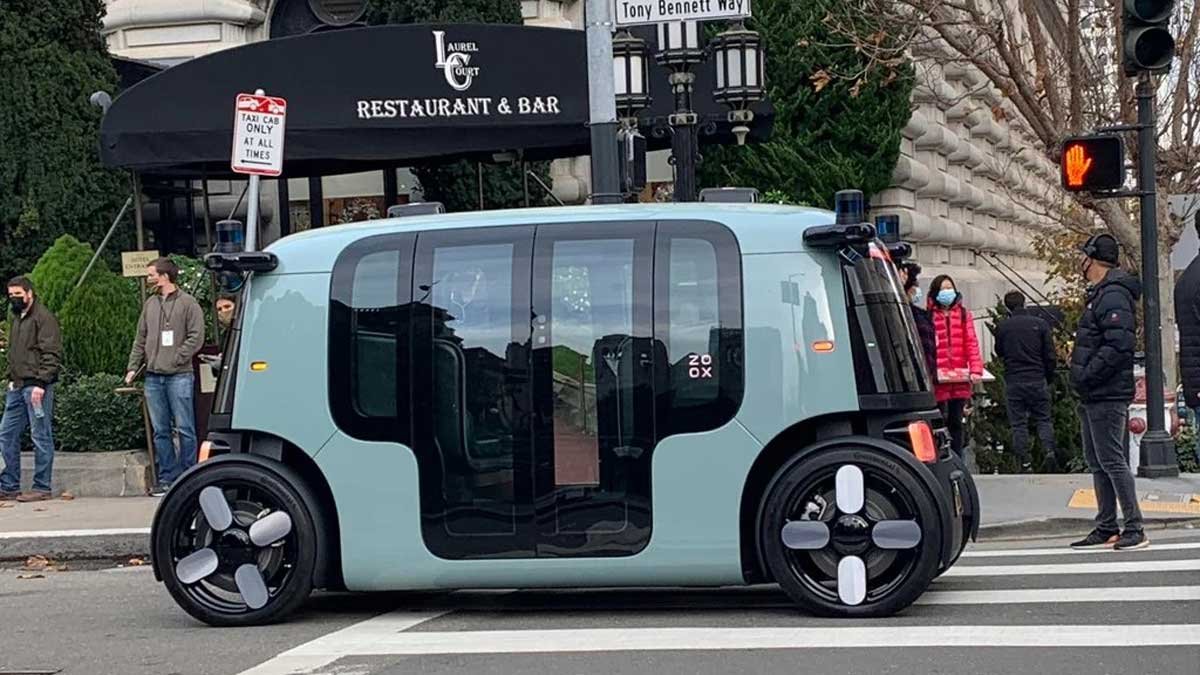Zoox, Amazon's bizarre, self-driving automobile, has a lot going for it.
The taxi of the future
〰️
The taxi of the future 〰️
Zoox was founded in 2014, it was purchased by Amazon in 2020 for a total of $1.2 billion. Since then, they've been hard at work designing and manufacturing a self-driving car from scratch. They aren't trying to sell the vehicle. Rather, they aim to establish a ridesharing business that can compete with Uber and Lyft in the future.
Few automakers give serious consideration to the manufacturing process. Self-driving cars of the future won't require front engines or seats that face forward, but today's self-driving vehicles are still based on regular automobiles. It's a work that Waymo accomplishes by installing a variety of displays and sensors in Chrysler Pacifica minivans that have been modified by the company. On the other hand, Tesla preserves the car's iconic design while incorporating self-driving technology through the use of cameras and sensors.
However, Zoox didn't impose any of these restrictions on itself. Thus, a unique vehicle that is unlike anything else on the road was created by the corporation. It resembles a human-sized toaster in appearance. Smaller than an i3, the Zoox automobile can move forward or backward without needing to do a U-turn. Because of the car's symmetry, there are fewer distinct pieces. Each side of the vehicle has large automated doors that open and close on their own. The inside has two bench seats that face each other, making it ideal for four people. A five-star crash rating is expected even with the unique choices Zoox has made for the vehicle.
In a lot of respects, the form of a Zoox is straightforward. It's shaped like a wagon since it's a room on wheels. The wheel wells are designed to funnel air in order to keep the vehicle aerodynamic.
"We're trying for more of a product aesthetic," says Nahuel Battaglia, Zoox's senior industrial design lead, "which is widely recognized in consumer electronics." Despite the fact that the corners are rounded, the overall appearance is one of a gadget. You could probably play with it if you made it smaller than the palm of your hand.
This is further demonstrated by the four sensor pods protruding from each corner like antennae. What if the Lidar depth camera and other sensors were made in the shape of a car? In any case, according to the team, their strategy is an excellent illustration of how form follows function. All four of the vehicle's corners needed to have cameras installed so that sensors could view as much as possible without the vehicle getting in the way. To ensure everyone's safety, the pods' fields of vision overlap since each can see in 270 degrees.
Additionally, these pods may be connected together in a variety of ways and come with their own cleaning solutions to keep the view clear. You can easily remove and repair or update them because they're not integrated into the automobile. In order to make it to 400,000 miles, Zoox's automobile needs to last that long.
From the exterior, it's hard to see how it's supposed to interact with people on the street. We can't communicate to self-driving cars in the same way we talk to ordinary automobiles since there is no driver inside. However, the design of Zoox's automobile is meant to make passengers feel comfortable and secure.
This is all about finding a means to communicate about self-driving automobiles," adds Stoffel. "Whether we realize it or not, we have a habit of speaking and acting in certain ways around drivers. Lights, hand gestures and head nods are all part of the celebration."
Each of the car's 32 speakers includes a 7-degree arc that it may use to distribute sound to various passengers. It was about "smart communication" and "making cities calmer," adds Stoffel. Rather than merely blaring their horn, the driver of the automobile may chirp at someone who is crossing the street while they are distracted by their phone. People who are attempting to get some shut-eye on Zoox will appreciate the calmer trip.

